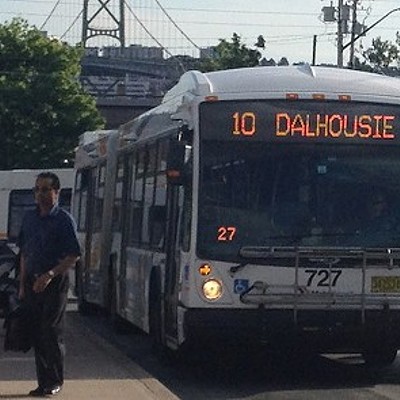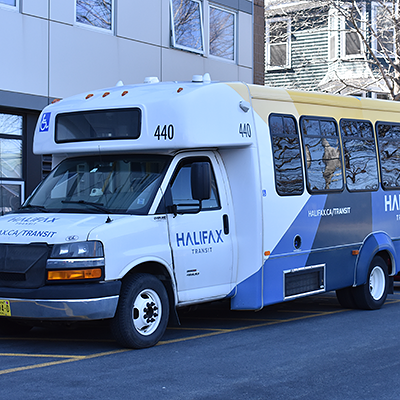A wheelchair user and frequent transit critic is again calling out Halifax Transit after he says the bus system stranded him in Dartmouth overnight.
Last month Daniel J. Towsey took the bus out to Maynard Lake to photograph the sunset. The bus he took had four-point tie-downs to secure his wheelchair, but when he tried to return to his peninsular home, he says none of the buses that would take him directly home had the proper tie-downs. As a result, he contends Halifax Transit left him in Dartmouth for 11 hours overnight.
In a video he filmed of his experience, Towsey can be heard telling a bus driver: "So you can't take me home. I'm sitting out here in the dark. If something happens to me and somebody mugs me, who's going to be blamed? Because you guys at Metro Transit can't provide safe buses for wheelchairs."
In the last few years, the city has gradually replaced its fleet with low-floor wheelchair-accessible buses. Some of the newer buses only have one-point tie-downs, which attach a chair to the bus at a single point rather than securing it on all four corners. These tie-downs aren't safe for Towsey's motorized chair because it weighs more than 500 pounds, he explains. "There's no way that wheelchair is not going to move."
City spokesperson Tiffany Chase says Halifax Transit sent an Access-A-Bus to pick up Towsey. The wheelchair rights advocate says that's true, but the Access-A-Bus was a newer model that couldn't fit his chair on board.
After hours of attempting to get home, Towsey's chair battery ran out of power and he became stranded. Eventually, a helpful police officer went to his apartment to get his battery charger and Towsey was able to take the ferry home early the next morning.
Currently 58 of Halifax's 273 accessible low-floor buses use the one-point system. Chase says it complies with Nova Scotia Utility and Review Board safety regulations and will be installed in all new buses going forward.
For its 2011 accessibility report, Metro (now Halifax) Transit consulted with seniors and people with disabilities about improvements to the bus system. Two concerns noted in the report were a "need for standard wheelchair securement device/tie-downs," and "operator training in disability awareness, the use of securement devices and providing assistance."
Paul Blaauw, a transit customer who uses a manual wheelchair to get around, says he's experienced some of the same bus problems as Towsey. Bus drivers' knowledge of the tie-down systems can vary widely, he says, and some drivers don't use the tie-downs at all. He describes the forward-facing four-point tie-down system that includes a seatbelt as "marvelous," but says the newer one-point tie-down can be unsafe.
On some buses, wheelchair users are positioned facing toward the back of the bus, which makes it difficult to know when your stop is coming up.
Chase says the rear-facing passive restraint system is widely used by other transit agencies in Canada and "meets all codes and safety regulations." She said basic training for drivers includes accessibility awareness and use of the tie-down systems.
Six years ago, Towsey was cycling in Dartmouth when a car struck him. The accident left his back in shambles and he now requires a wheelchair. He believes the city has a long road ahead if it wants to make its bus fleet, and other municipal infrastructure, fully accessible.
"There's no wheelchair rights at all. Once you become disabled, you lose all your rights. You're treated like an animal."


















